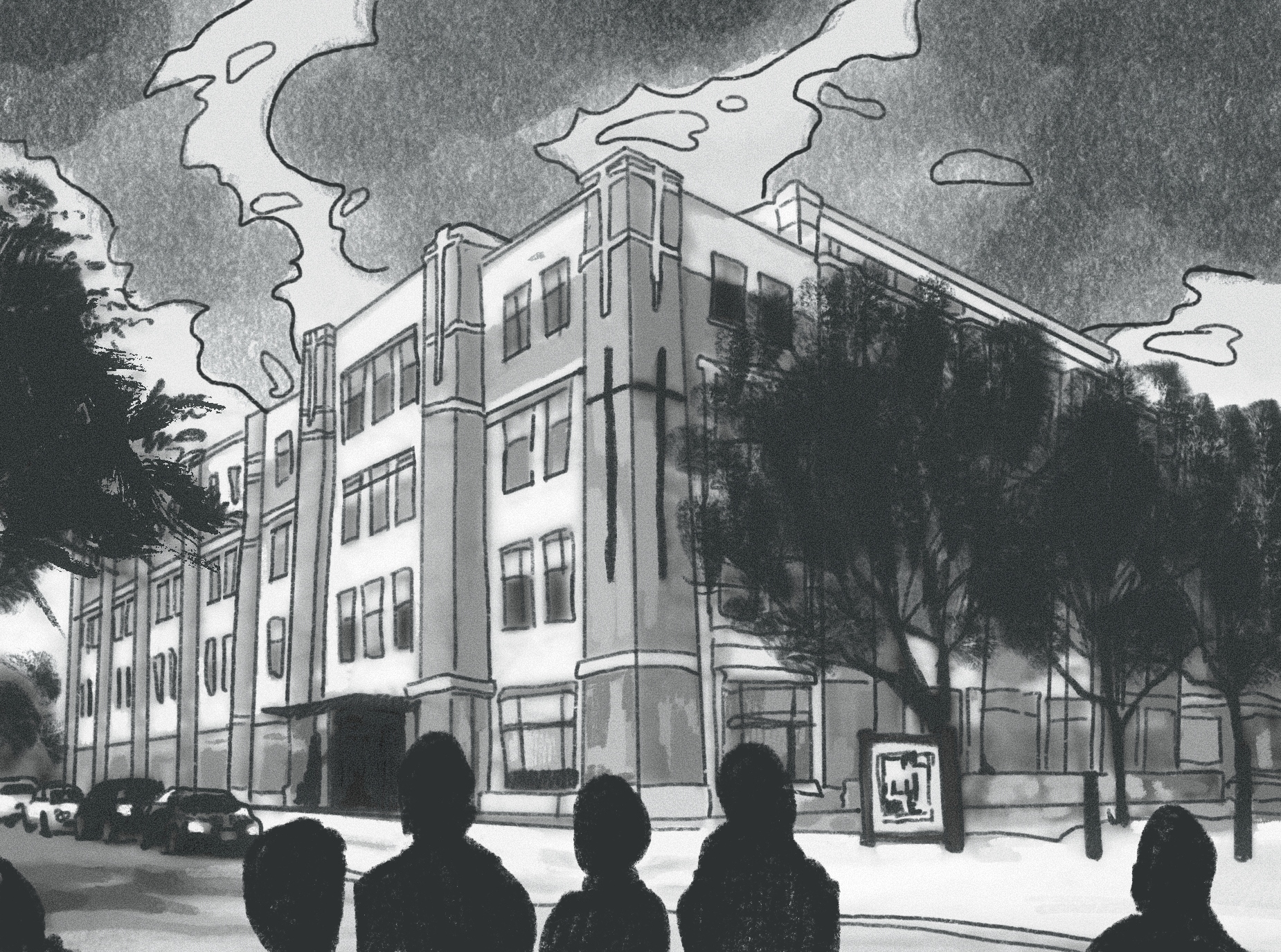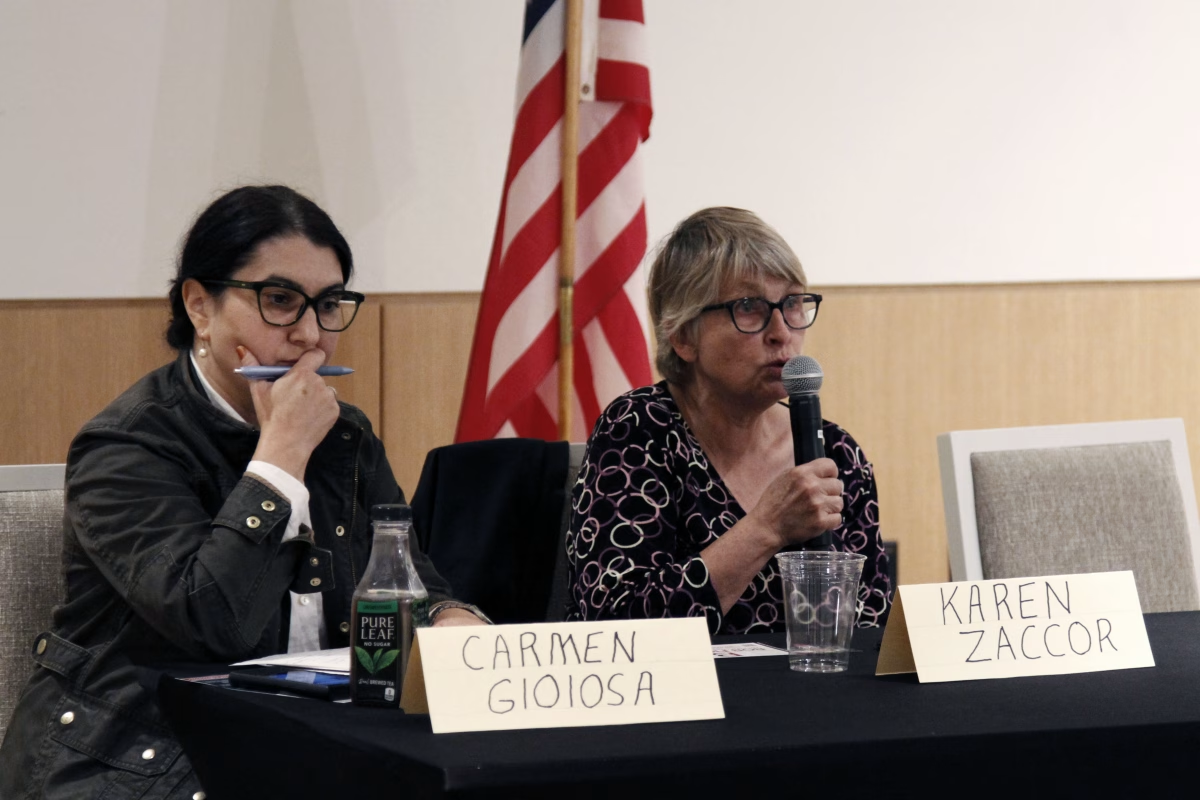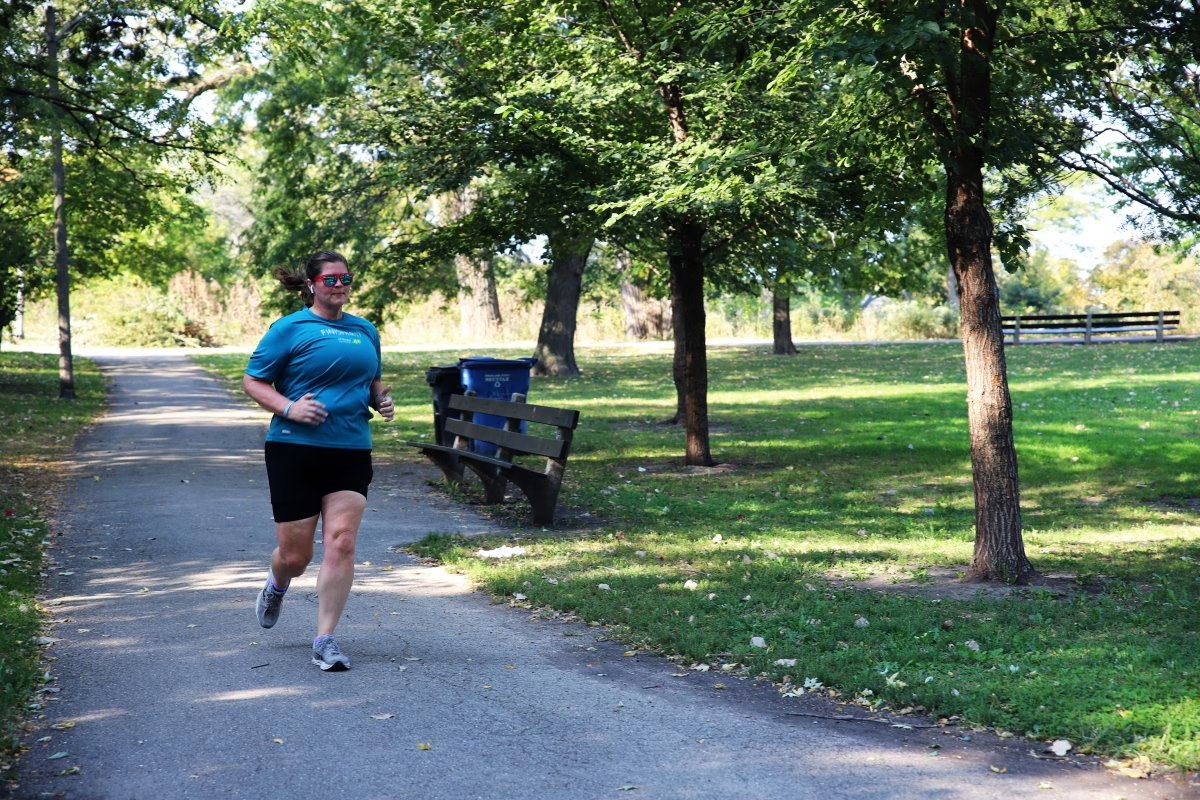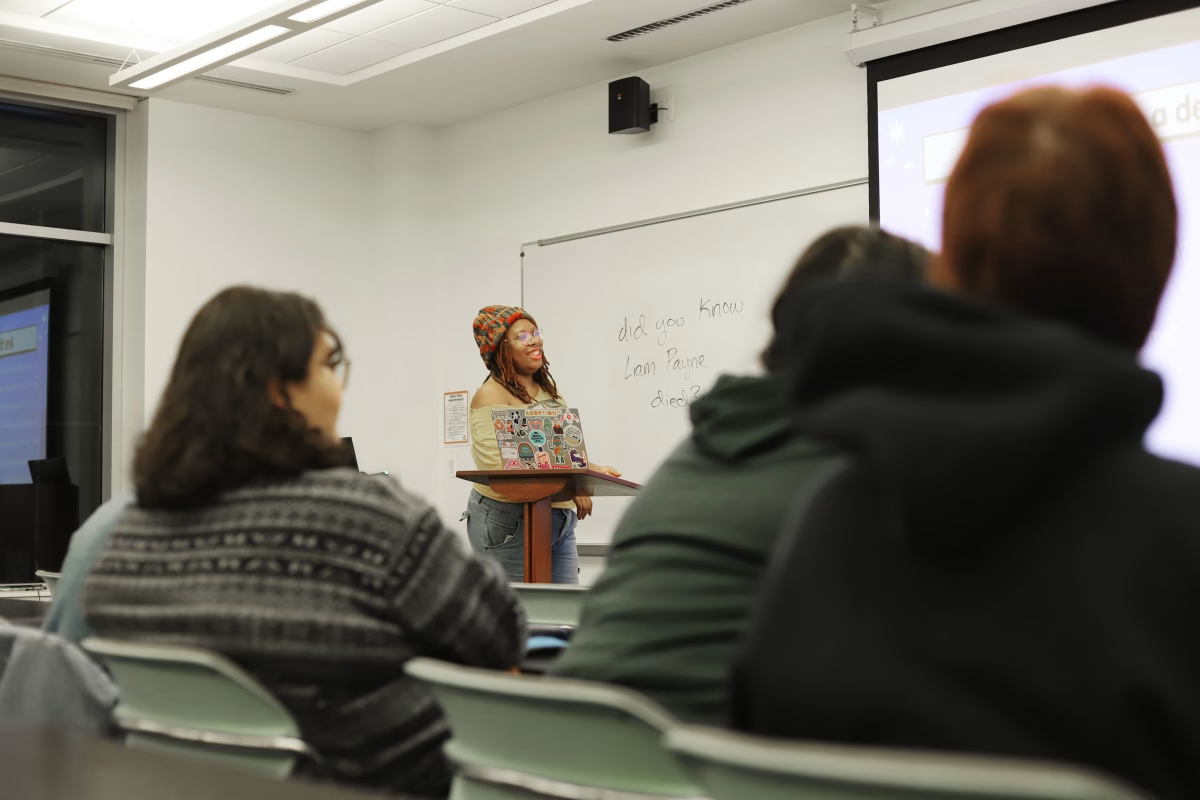DePaul’s McGowan North is the fourteenth highest greenhouse gas emitting building per square foot in Chicago, city data shows.
Five other DePaul buildings – McGowan South, the Lincoln Park Student Center, The DePaul Center, Centennial Hall and the Holtschneider Performance Center – were also listed as high-emitting buildings in the city using 2021 data. McGowan South and the Holtschneider Performance Center are LEED-certified.
LEED certification is the most widely used green building certification internationally, which is why DePaul senior Chris Impellizeri was concerned to hear that even DePaul’s newest buildings were high-emitters.
“We have LEED certified buildings, but then just to see a statistic like that, it’s kind of insane,” he said.
The Chicago metro chapter of The Climate Reality Project, an international climate education and advocacy organization founded by former vice president Al Gore, contacted the university Feb. 2 regarding DePaul’s high-emitting buildings.
Rachel Fredericks of The Climate Reality Project said she emailed DePaul and numerous other Chicago universities in early February to alert them to their high-emitting buildings, and request university sustainability plans.
“We told these folks that we’re writing a report, you’re going to be mentioned in it and we thought you’d want to know,” Fredericks said. “We expressed an interest in helping any administrations who want help from a volunteer nonprofit to develop climate action plans.”
Chicago has an energy benchmarking ordinance requiring buildings over 50,000 square feet to report their energy usage annually to the city and verify data accuracy every three years.
Fredericks said the Chicago metro chapter noticed a pattern in city data showing many of the highest emitting buildings were owned by colleges and universities.
She said 70% of greenhouse gas emissions in Chicago come from buildings, which is why The Climate Reality Project is heavily invested in widespread building decarbonization
Fredericks said of the six DePaul buildings tagged as high-emitters, their total emissions are equivalent to 16 times the median emissions of one building on the data set.
However, Fredericks noted that the usage of each building must be taken into account when assessing why the emissions are so high.
“The fact that DePaul has some high ranking buildings by itself is not a reason to completely freak out and be angry, but it is a reason to do some research on the buildings on this list and determine if their high emissions make sense,” Fredericks said. “If not, there’s a question of where to go from there.”
Vice President of Facility Operations Rich Wiltse echoed this idea in a statement to The DePaulia, noting that the high emissions do not indicate structural problems with the buildings.
Rather, Wiltse said, “The Chicago benchmarking tool… does not take into account or make any adjustments for building type, the work done in the building, the number of hours the building is operated daily, or other important factors that should be considered when comparing one building to the next.”
Wiltse also noted the city data is from 2021 in the wake of the Covid-19 pandemic, when many buildings in Chicago were not being used to their fullest capacity, but DePaul was open and employing new air-quality promotion systems that required high energy expenditure.
“Our COVID-19 mitigation and safety procedures included operating HVAC systems with more restrictive air filters, running building systems for a minimum of two additional hours before and after typical occupancy to help clean the air,” he said. “All of these necessary safety protocols translated to significant increases in utility consumption, something other buildings in Chicago didn’t have to do at our scale.”
Wiltse said he and other members of the university administration are crafting a detailed response to The Climate Reality Project outlining the specific usage of the high-emitting buildings and explaining sustainability plans.
“We intend to elaborate on what steps DePaul has already taken and those it intends to take in the future towards meeting the aspirational goal memorialized in 2021 to offset up to 80% of its CO2 emissions by 2040,” he said.
McGowan North and South house DePaul’s College of Science and Health. Each building contains labs, research centers and equipment, which Fredericks said may contribute to the high energy usage. McGowan North was built in 1998, while McGowan South was built in 2009.
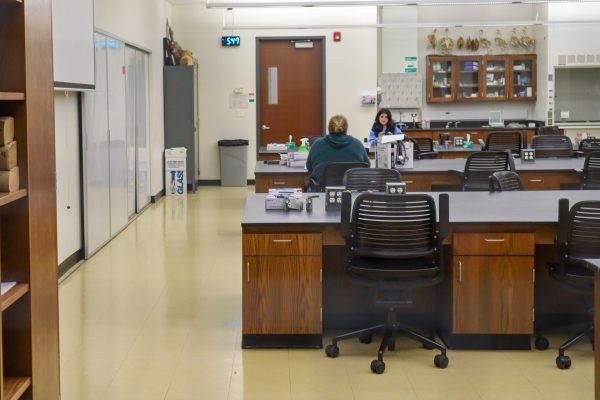
Fredericks said the data does not tell the whole story, which is why The Climate Reality Project sought to engage university administrators, and especially students, to explore the root of the emissions problem and work toward solutions.
“It’s going to be people who have inside knowledge about DePaul who can figure it out,” Fredericks said.
Impellizeri, the DePaul senior and treasurer of the DePaul Urban Garden, said he wants to see concrete investments in energy saving and electrifying technology.
“We could be investing more in solar and winds,” he said. “We already have solar power stations outside on the quad, so I see no reason why we can’t extend that to buildings like this.”
Fredericks could not offer specific solutions for reducing emissions in these buildings because she does not know what is causing the high-emission rate. However, she said solutions generally include efficiency upgrades or electrification, as Impellizeri suggested.
Fredericks said, “Schools have a mission to serve the public good,” and buildings that use energy inefficiently cost the institution a lot of money, often from tuition revenue and donor funds.
This is a reason why she said student involvement is key to holding administrations accountable for following through on sustainability plans.
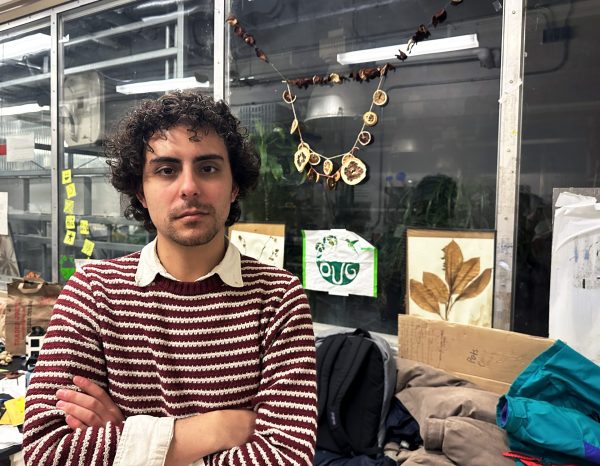
Barbara Willard, DePaul professor and co-chair of the president’s sustainability committee, responded to The Climate Reality Project’s Feb. 2 email with interest and concern.
“I saw this as an opportunity to encourage the administration to take action and see through our stated goals,” Willard said. “I was unaware of how extensive our emissions were until I looked up the benchmarking data.”
Willard said she and other members of the president’s sustainability committee directly contacted President Robert Manuel and chief of staff Arbin Smith about DePaul’s high-emitting buildings in response to The Climate Reality Project’s initial alert.
“We told them we hoped to start working on a climate action plan and if they had feedback and/or would like to collaborate with the PSC on writing it,” she said. “I have not heard back yet from the president myself.”
DePaul’s Student Government Association sent an open letter to Manuel Tuesday, Feb. 13, requesting the university draft a climate action plan to address the high-emitting buildings and other sustainability goals following The Climate Reality Project’s email.
Manuel responded to the SGA’s open letter on Saturday, Feb. 17, saying
University leadership wants to collaborate with students, faculty and staff to strengthen DePaul’s climate efforts, in line with Pope Francis’s encyclical on the environment, Laudato Si.
“I have asked Rich Wiltse, vice president for Facility Operations, to lead this effort and to begin by engaging the expertise of an external professional firm that can help DePaul identify an optimal and realistic path to a decarbonized future,” Manuel said in an email response to SGA on Saturday.
In 2009, former DePaul president Dennis Holtschneider established a sustainability initiatives task force that produced the Institutional Sustainability Plan of 2012, referenced in SGA’s open letter.
In 2021, then-president Gabriel Esteban convened the president’s sustainability committee after pressure from students, faculty and staff. The committee’s foundational document identifies lowering university emissions as a dominant goal, according to Willard.
Rubén Alvarez, co-chair of the president’s sustainability committee, told The DePaulia Feb. 15 that a climate action plan is in the works, but developing such a plan takes time and collaboration within the university and with other organizations.
“Right now my work is researching other higher ed institutions that have developed climate action plans so we can learn from their process and experience to get a handle on how we might be able to implement a climate action plan here at DePaul,” Alvarez said.
During this process, President Robert Manuel said in a statement to The DePaulia that he “welcomes the opportunity to engage in conversation with SGA, the president’s Sustainability Committee, students, and other campus partners to discuss climate efforts at DePaul.”
Impellizeri hopes to participate in these conversations as a student and activist.
“If DePaul really wants to be a community conscious, environmentally friendly campus, we want to see them putting their money where their mouth is,” Impellizeri said.


